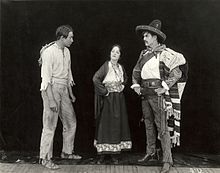
Hobart Van Zandt Bosworth was an American film actor, director, writer, and producer. Bosworth began his career in theater, eventually transitioning to the emerging film industry. Despite a battle with tuberculosis, he found success in silent films, establishing himself as a lead actor and pioneering the industry in California. Bosworth started his own production company, Hobart Bosworth Productions, in 1913, focusing on Jack London melodramas. After the company closed, Bosworth continued to act in supporting roles, surviving the transition to sound films. He is known as the "Dean of Hollywood" for his role in shaping the California film industry. In 1960, Bosworth was awarded a star on the Hollywood Walk of Fame for his contributions to the film industry.

The Soul Herder is a 1917 American silent Western film directed by John Ford, and featuring Harry Carey. The film is presumed to be lost. The film was premiered in Dayton, Ohio, on August 3, 1917.

The Scarlet Drop is a 1918 American silent Western film directed by John Ford and featuring Harry Carey. Just over 30 minutes of footage of the film now survives in the Getty Images Archive.

The Squaw Man is a 1918 American silent Western film directed by Cecil B. DeMille. It is a remake of DeMille's 1914 film of the same name, which is based upon a 1905 play by Edwin Milton Royle. The film was reportedly made as an experiment to prove DeMille's theory that a good film is based on a good story. It cost $40,000 to make and grossed $350,000. It would be remade again by DeMille in 1931. The 1918 The Squaw Man is a lost film with only the last reel extant.

The Mystery Ship is a 1917 American adventure film serial directed by Harry Harvey and Henry MacRae. The film is considered to be lost.

The Red Ace is a 1917 American adventure film serial directed by Jacques Jaccard. An incomplete print which is missing four chapters survives in the film archive of the Library of Congress.

The Bull's Eye is a 1917 American film serial directed by James W. Horne. It is now considered to be a lost film.
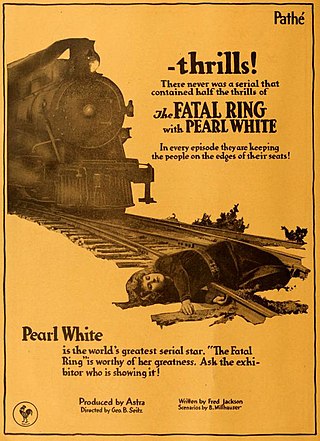
The Fatal Ring is a 1917 American action film serial directed by George B. Seitz. Silentera.com reports that the UCLA Film and Television Archive may have a complete print.
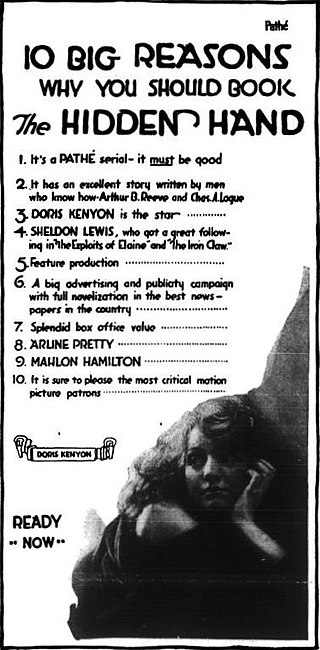
The Hidden Hand is a 1917 American film serial directed by James Vincent. This is a lost serial.

The Seven Pearls is a 1917 American silent action film serial directed by Louis J. Gasnier and Donald MacKenzie. Fragments are held by the Library of Congress.
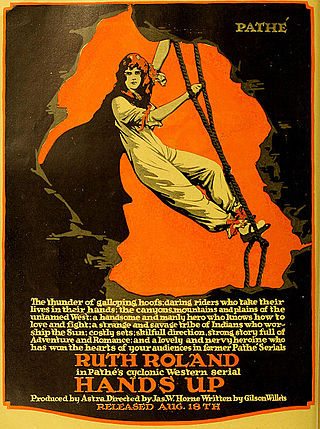
Hands Up is a lost 1918 American adventure film serial directed by Louis J. Gasnier and James W. Horne. The serial was Ruth Roland's breakthrough role.

The Eyes of Mystery is a lost 1918 American silent mystery film directed by Tod Browning starring Edith Storey.

Golden Rule Kate is a 1917 American silent Western film starring Louise Glaum, William Conklin, Jack Richardson, Mildred Harris, and John Gilbert. It was directed by Reginald Barker from a story written by Monte M. Katterjohn and produced and distributed by the Triangle Film Corporation.
The Man From Montana is a 1917 silent black and white film directed by George Marshall. It stars Neal Hart and George Berrell. It is not known whether the film currently survives, which suggests that it is a lost film. The film should not be confused with the 1941 film Man from Montana.

The Love That Lives is a 1917 American silent drama film produced by Famous Players Film Company and distributed through Paramount Pictures. The film stars Pauline Frederick and was directed by Robert G. Vignola. The film is based on the story "Flames of Sacrifice", by Scudder Middleton.

Riders of the Night is a 1918 American silent drama film directed by John H. Collins and starred his wife Viola Dana. It was produced and distributed by the Metro Pictures company.

A Mormon Maid is a 1917 American silent drama film directed by Robert Z. Leonard and written by Charles Sarver and Paul West. While traveling westward with her family, Dora must face the proposal to become a Mormon elders sixth wife. The film stars Mae Murray, Frank Borzage, Hobart Bosworth, Edythe Chapman, Noah Beery, Sr., and Richard Henry Cummings. The film was released on April 22, 1917, by Paramount Pictures. The film survives complete.

On the Level is a lost 1917 American silent Western film directed by George Melford and written by Marion Fairfax and Charles Kenyon. The film stars Fannie Ward, Jack Dean, Harrison Ford, Lottie Pickford, James Cruze, and Jim Mason. The film was released on September 10, 1917, by Paramount Pictures.

His Mother's Boy is a 1917 American silent drama film directed by Victor Schertzinger and written by Ella Stuart Carson. The film stars Charles Ray, Doris May, William Elmer, Josef Swickard, Jerome Storm, and Gertrude Claire. It is based on the short story "Where Life is Marked Down" by Rupert Hughes. The film was released on December 24, 1917, by Paramount Pictures.
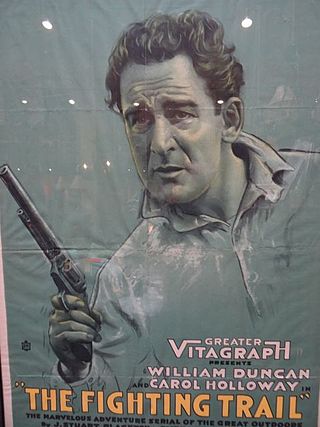
The Fighting Trail is a lost 1917 American silent Western serial film directed by and starring William Duncan. It was produced and distributed by the Vitagraph Company of America. It was released in 15 chapters.
